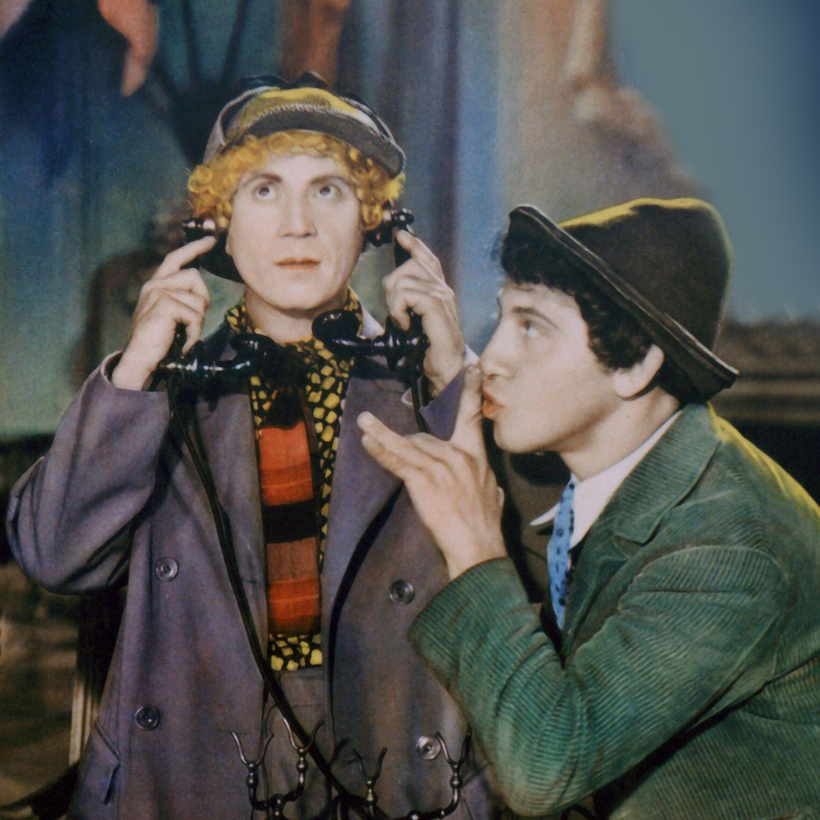A band of cheerful, colorfully dressed creatures has emerged from the bowels of the earth—or Instagram—to re-invigorate the world of fashion. Dubbed “gnomecore” by pun-loving fashion columnists riffing on the 2012 “normcore” craze, you can spot followers of the trend by their laid-back style and jolly manner.

From actor Willem Dafoe to architect Gaetano Pesce and volcano explorer Maurice Krafft, gnomecore guys are proudly middle-aged, often bald, and full-bellied. Their clothes are homespun and rugged, yet fanciful—a style that offers a silly escape from the pressures of elfin beauty standards and demands of the human world.
In search of the trend’s origins, I reached out to @_gnomecore, an anonymously run Instagram account that posts images from of-the-moment lookbooks and shots of aged geezers, and is credited with popularizing the term. From his burrow in rural England, the anonymous gnome talked to me on Zoom, camera off, about the many inspirations for the account: old fishermen, hippies, 19th-century painters, and well-aged celebrities, such as Christian Bale, whose face is the account’s avatar.

Bigger than any one garment, gnomecore is “a move away from the status quo” of sneaker culture and all-over logos, said my interlocutor, “towards more of a warm feeling of family or community.”

To see how this look comes together on real people rather than on mood boards, I reached out to Mano Dridi, director of All Blues Co., a multi-brand men’s-wear shop in Leeds that’s a go-to for gnomecore guys. The store mixes small, offbeat brands from South Korea with classic British and American labels. While the core item of gnomecore is a stacked beanie or pointy hat, there’s more to the look than headgear. Dridi suggested adding chunky leather shoes, gardening mules, and wide-cut trousers because “comfort is my No. 1 thing now … but not scruffiness.”
After comfort, Dridi says, gnomecore’s next priority is color. On display in his shop are 26 shades of brushed Shetland sweaters from Harley, a heritage Scottish-knitwear brand. For gnomish outerwear, he recommends a wool duffle coat in emerald or a featherbed puffer in bright red. As with any gnomecore ensemble, wrinkles, moth holes, and wine or coffee stains are to be expected.

For the well-off gnomes, consider recent offerings from the Elder Statesman and JW Anderson, which range from elevated takes on cashmere patchwork jumpers and mushroom motifs.
Gnomecore is “a move away from the status quo” of sneaker culture and all-over logos “towards more of a warm feeling of family or community.”
Other gnomes I spoke with are looking back in time for style inspiration. Recently, fashion illustrator and Parsons School of Design professor Richard Haines has been revisiting issues of Adam, a French men’s-wear magazine from the late 1940s. He’s been particularly drawn to postwar après-ski looks: colorful knits paired with wide-wale cords and rugged Paraboots. For Haines, these pictures of the smiling, outdoorsy men seemed to signal a turn away from the somber mood of the war.
“There was a kind of relief and exuberance of being back in the world,” Haines says of those midcentury images. “Not that different from three years of lockdown.”
This coming-out-of-hibernation feeling is also part of the underlying “body acceptance” and “bearish aesthetic” at the heart of gnomecore, says Haines. Beneath the cheer, there is a cheeky, even freaky side to these little bearded guys. Consider the online revival of Vivienne Westwood’s Snow White and the Sir Punks T-shirt from the late 1970s, featuring Disney’s seven dwarves and Snow White in a gang bang.

Along similar lines, Belgian designer Walter Van Beirendonck has been putting a distinctly queer twist on the gnomecore look, with raunchy graphics of a Santa-like character with erect nipples and outré, skintight ensembles for forest raves. His eponymous label even offers neon face masks with phallic noses for the gnomes who prefer glory holes to hobbit holes.
The appeal of gnomecore runs deeper than Berghain’s basement. The word “gnome” was first coined by a 16th-century Swiss doctor in his taxonomy of fairies and sprites. He derived the term from gēnomos, the Greek word for “earth-dweller,” to describe dwarf-like creatures who live underground and can lead humans to hidden treasure. Oddly, it is this ancient, pagan connection with the earth, not just pointy hats, that seems to be attracting a renewed interest in gnomes.
During the pandemic, many British designers began exploring the visual-and-material culture of their pagan ancestors, perhaps because they were being forced to leave their London studios for the first time in years. With the help of zines, such as Weird Walk, and “WitchTokers,” TikTokers who extol the virtues of St. John’s wort, the ancient magic of the sceptered isle has become cool again.
Maybe it’s just the recent solstice talking, but the time seems right for gnomecore. Whether it’s a rejection of flashy sneakers and overpriced hoodies, a celebration of cozy vibes, or something far more bizarre, the gnomes have something to offer curious humans. Gnomecore isn’t really a fashion trend that fetishizes beards and pointy hats so much as a state of mind—either earnest or ironic—that proposes a simpler, more joyful way of life.
Daniel Penny is a U.K.-based journalist and critic

